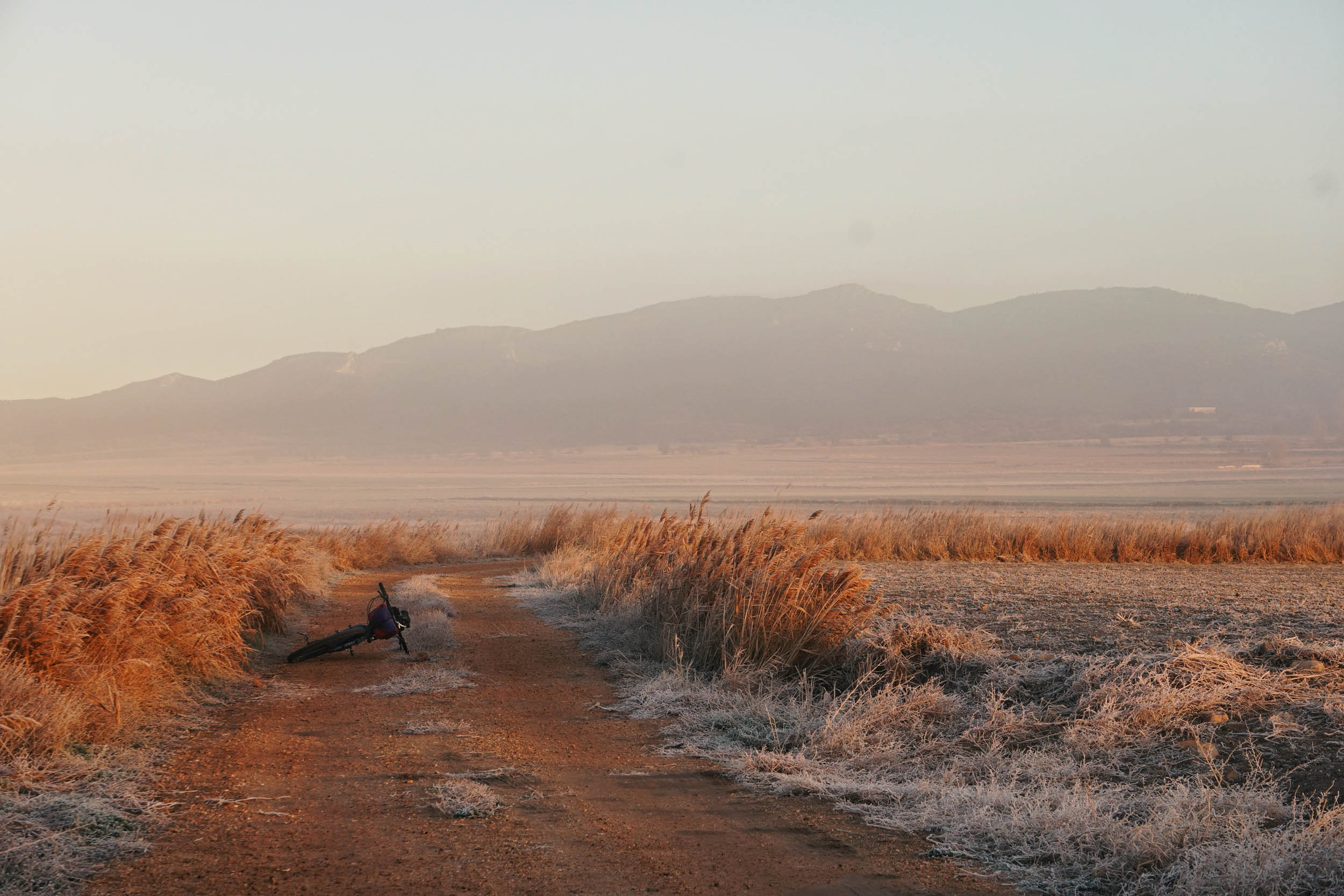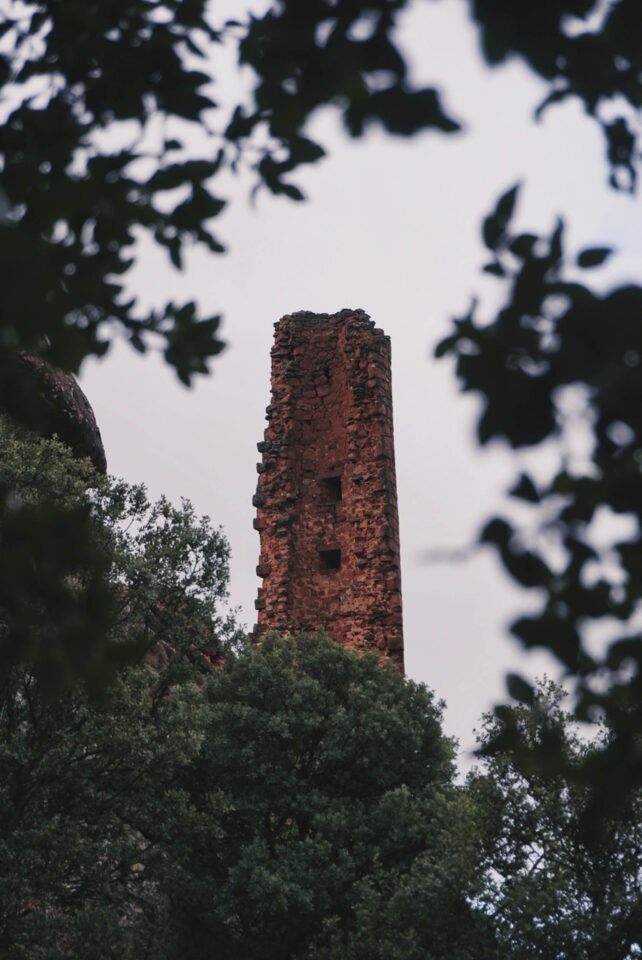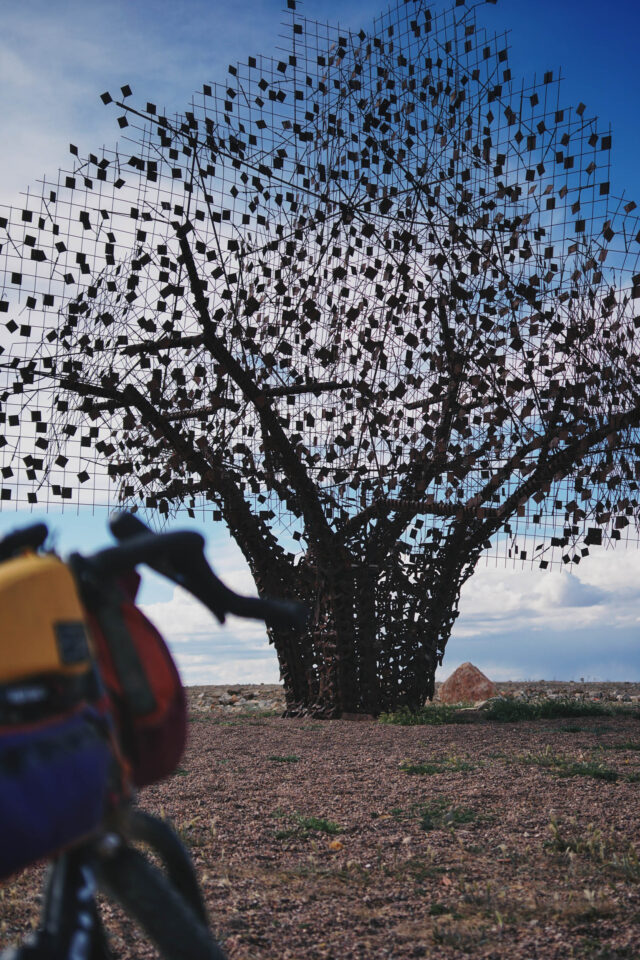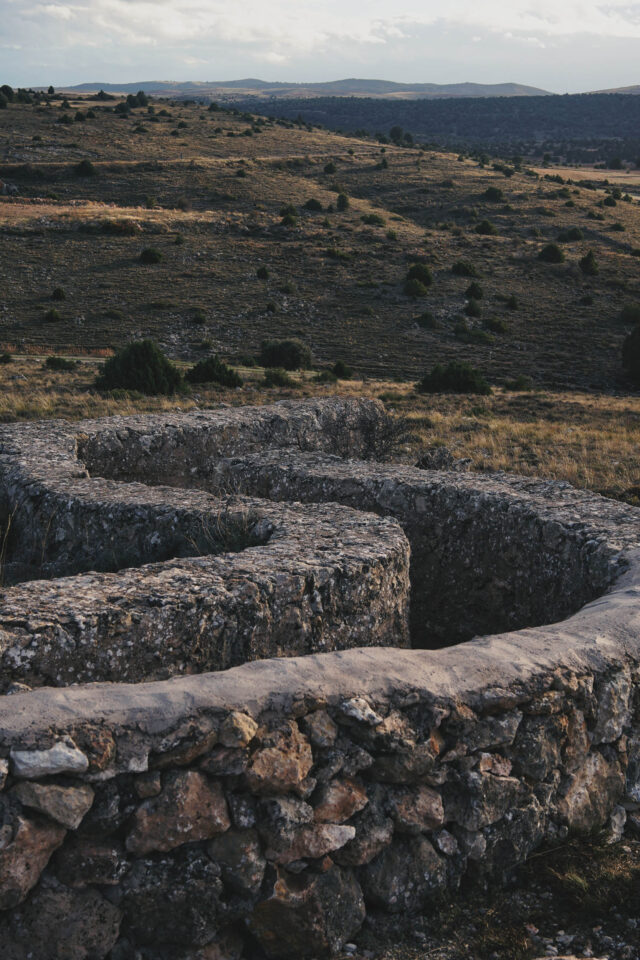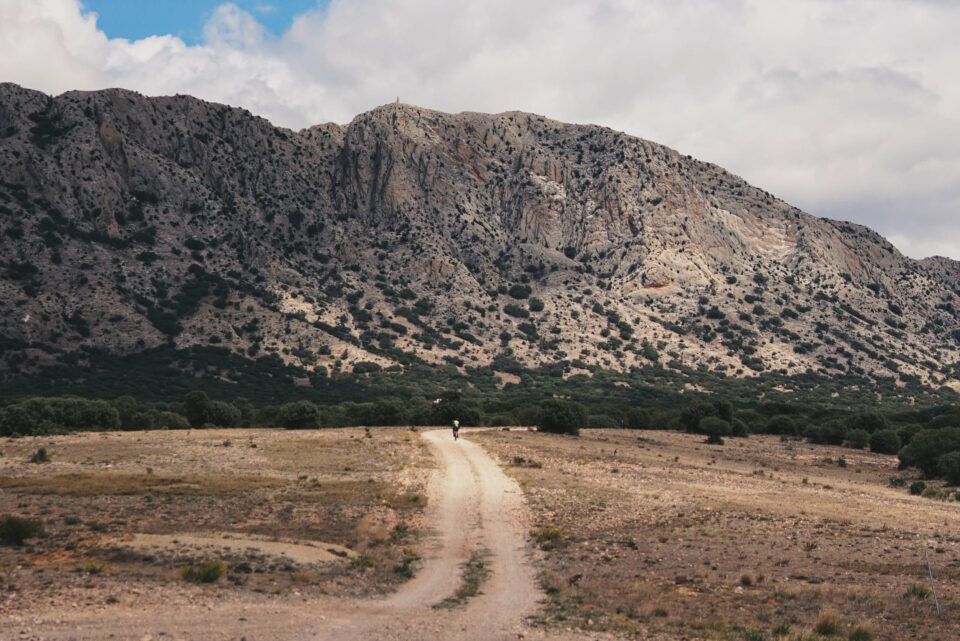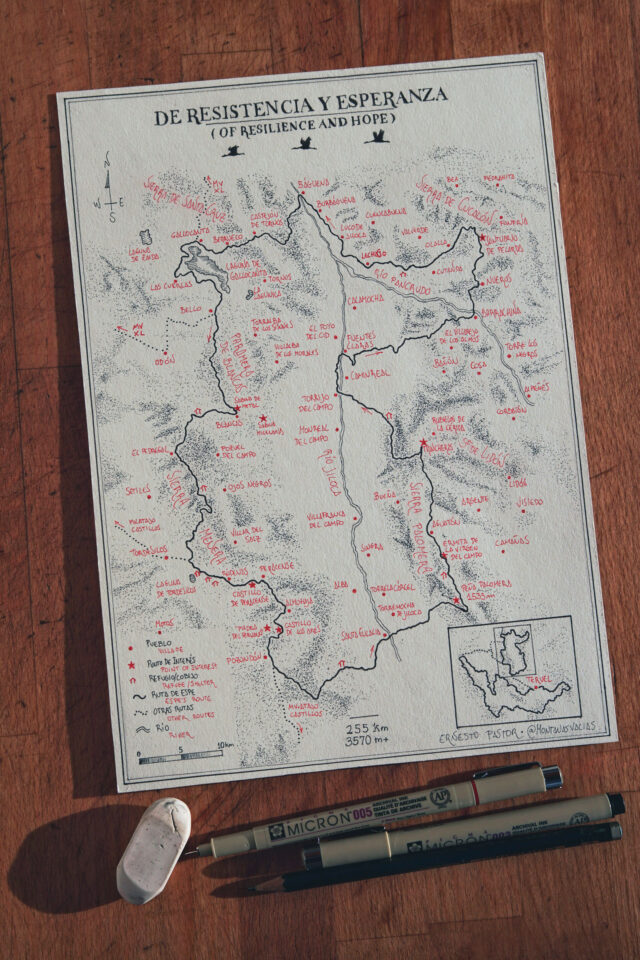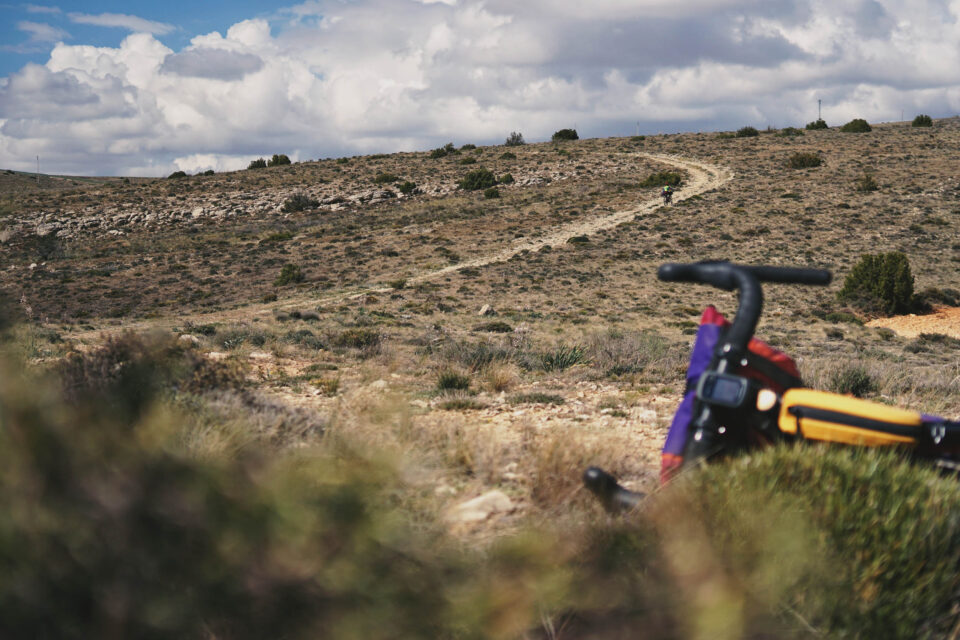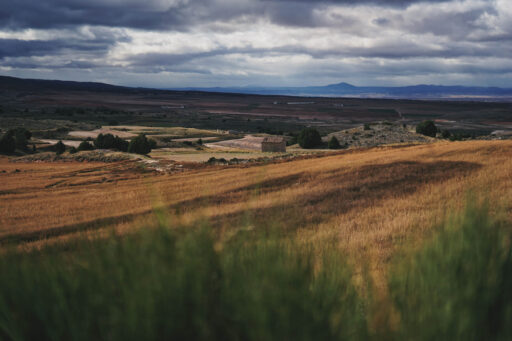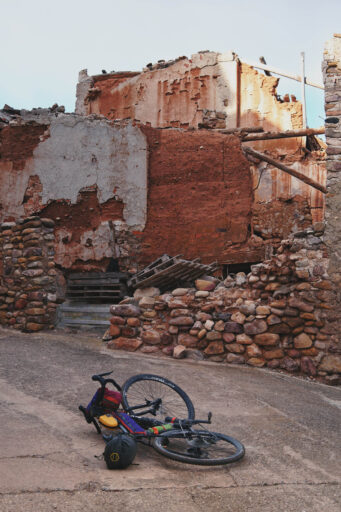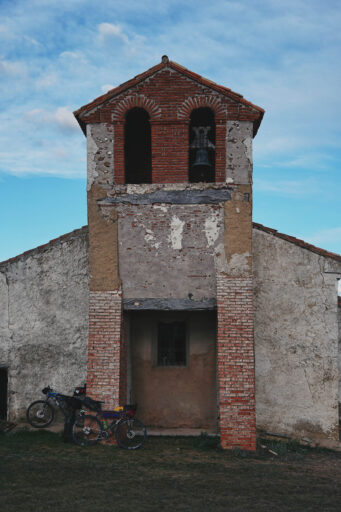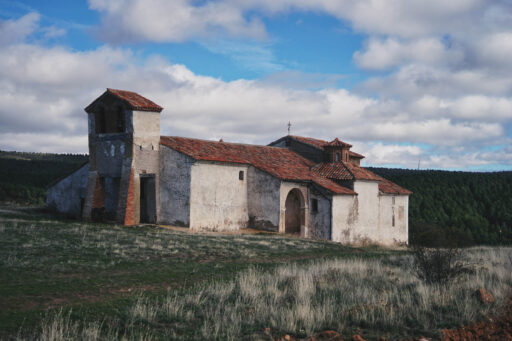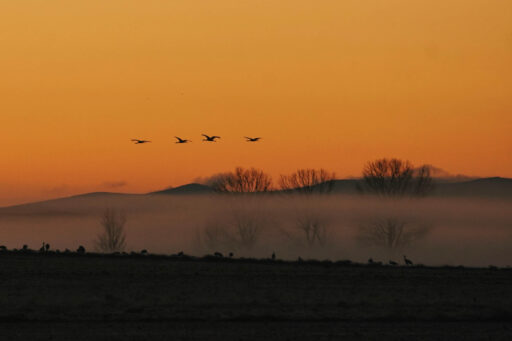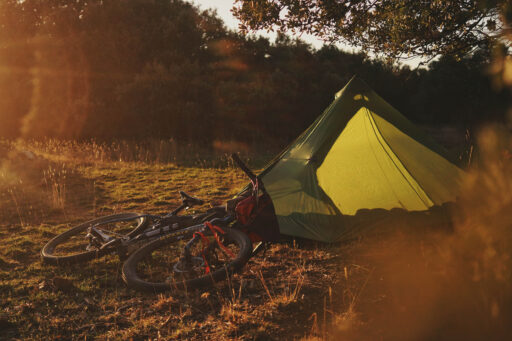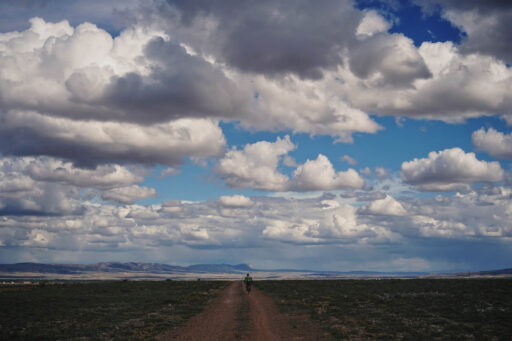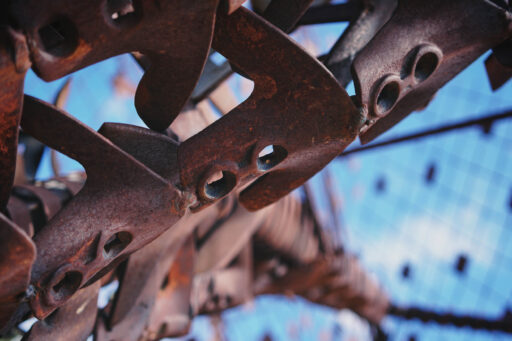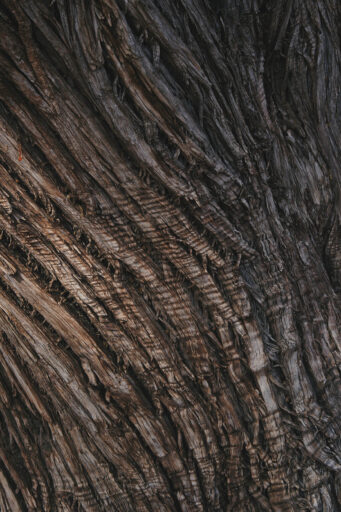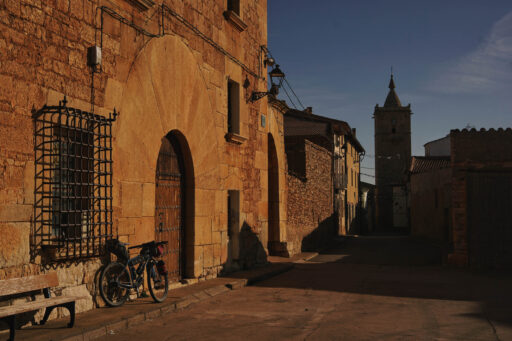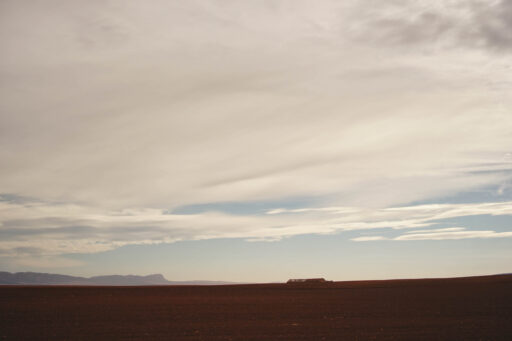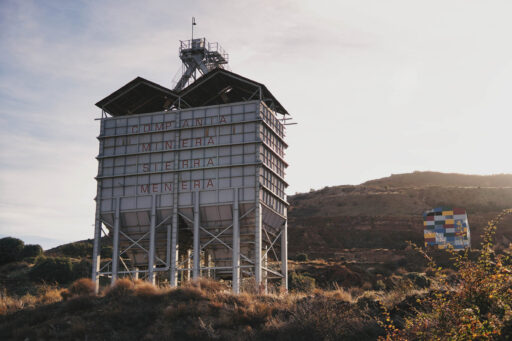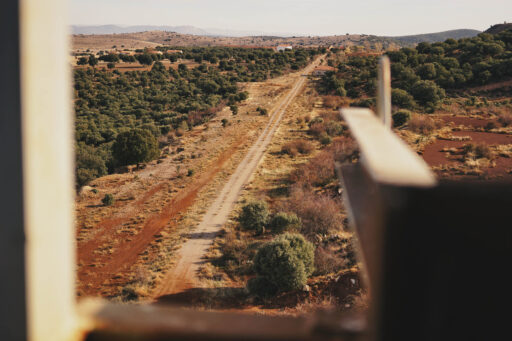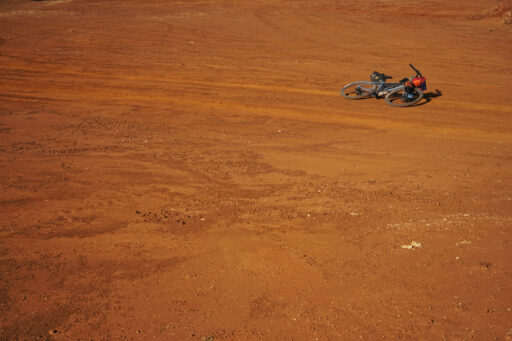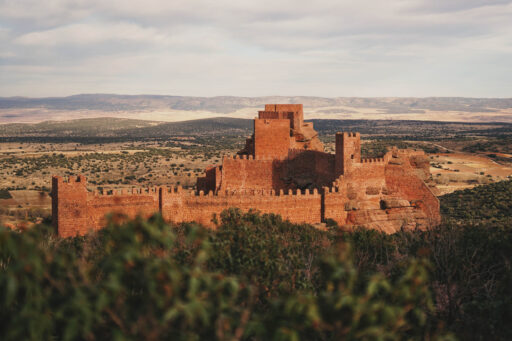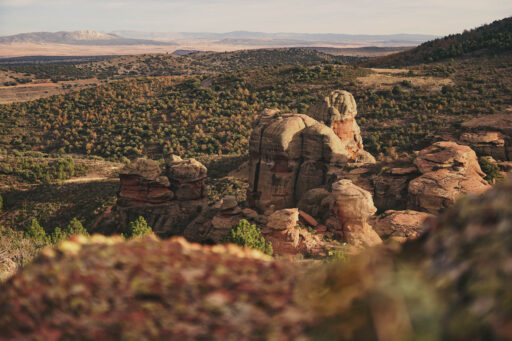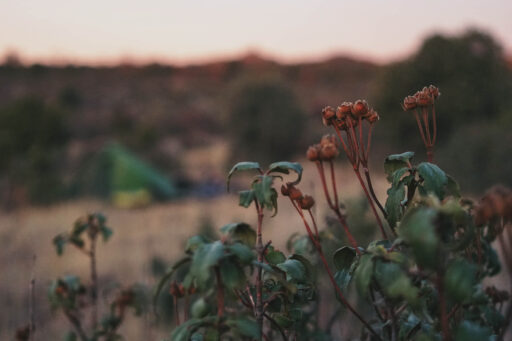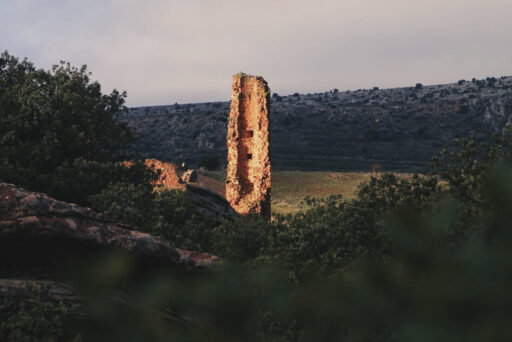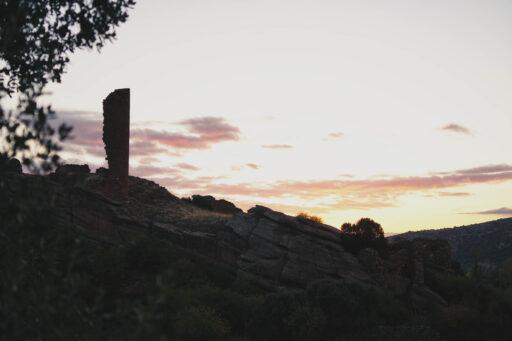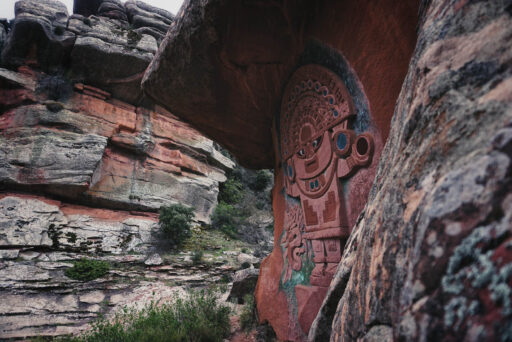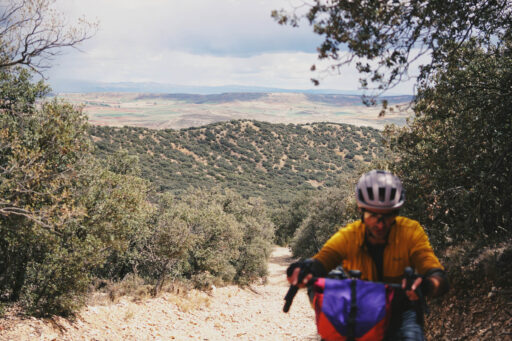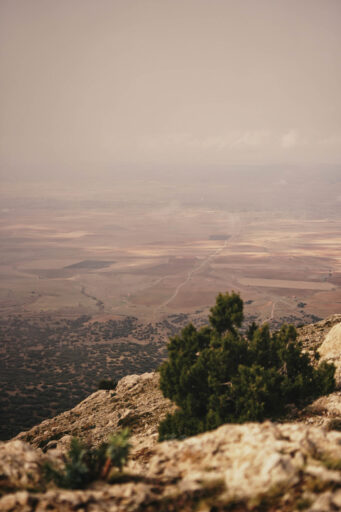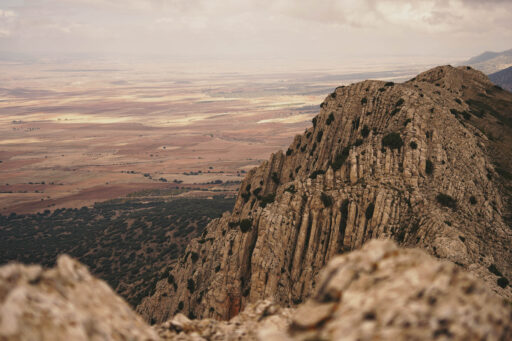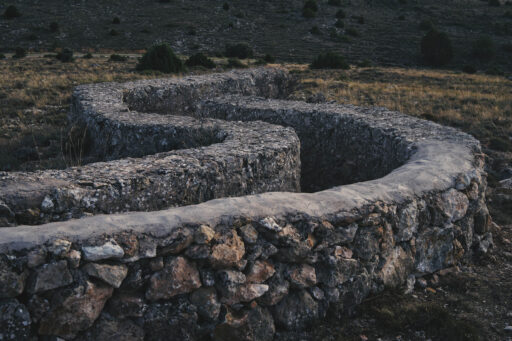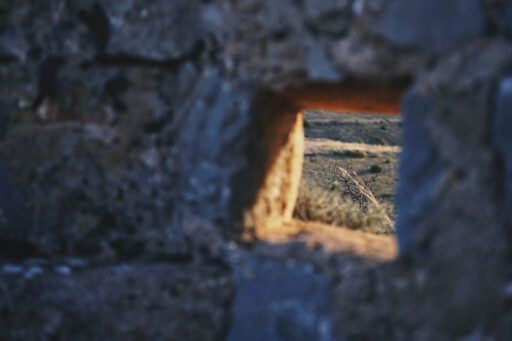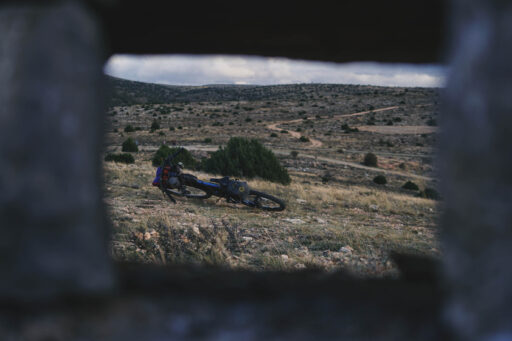Of Resilience And Hope
Distance
159 Mi.
(256 KM)Days
3-4
% Unpaved
81%
% Singletrack
1%
% Rideable (time)
99%
Total Ascent
11,716'
(3,571 M)High Point
4,751'
(1,448 M)Difficulty (1-10)
5?
- 5Climbing Scale Moderate74 FT/MI (14 M/KM)
- 5Technical Difficulty Moderate
- 6Physical Demand Moderate
- 6Resupply & Logistics Moderate
Contributed By

Ernesto Pastor
Guest Contributor
Ernesto Pastor is restless and curious, and his monkey mind is always jumping between maps and books, trying to cook up new routes and adventures. In 2018, he created Montañas Vacías, an open bikepacking route across the Spanish Lapland that he hopes will help showcase the value of bicycle travel as a tool for change in rural areas. You can follow him on Instagram @montanasvacias
Of Resilience And Hope pays tribute to the toughness and resilience of a land that refuses to lose its identity. Now, more than ever, these villages need all of us, inhabitants and visitors alike, to make an effort to enhance the value of their landscapes, which, despite their harshness, hide a tremendous fragility and vulnerability.
The reality of this area is that, apart from the villages at the bottom of the valley, there are no more than four inhabitants per square kilometer along the entire route. And those are just the official figures. You only have to ride through these villages between October and May to realize that the real figures are much harsher. In villages such as Olalla, Almohaja, Pozondón, Aguatón, and Nueros, there isn’t even one.
Despite this, the region is remarkable for its cultural and historical significance. Over the course of 12 chapters, you will embark on a journey that unveils new and awe-inspiring perspectives of the valley, revealing the striking contrasts found in castles such as Peracense or Los Ares. You will also be immersed in the region’s fascinating history as you explore the abandoned mines of Ojos Negros and the war trenches of Los Pilones.
In terms of geology, the route boasts great interest due to the variety of landscapes that are the region’s hallmark. From the Jiloca depression to the Gallocanta Lagoon, and from moorlands to forests with age-old trees, there is no room for monotony. The route traverses areas of immeasurable environmental and ecological value, including bird sanctuaries with endangered species such as the Dupont’s Lark or steppe birds such as the little bustard or the great bustard, as well as nature reserves where thousands of cranes gather each year during their migration. Like all Montañas Vacías routes, Of Resilience And Hope features outstanding acoustic quality. These soundscapes are among the best-preserved in Europe, and you can pedal for hours without hearing a single disturbance of human origin.
However, the installation of hundreds of wind turbines could change this situation forever. This land embodies sacrifice, as it is ingrained in its DNA. In the mid-20th century, its inhabitants left to fuel the growth of the country’s major cities. Now, there is a growing sense that they are being asked to sacrifice again, surrendering their landscape, their greatest treasure, to nourish the big cities with energy. These cities are located far from the source of the resource and are surrounded by already degraded environments where the impact would not be the same.
It’s clear that this is a many-sided issue, one that provokes much debate in the area and requires a challenge of consensus between the actors to solve it. This route and its accompanying narrative are intended to provoke reflection, to invite the traveler to be immersed in the different realities, to encourage critical thinking, and to help form a more holistic opinion. Traveling is already a lesson in critical thinking that could help resolve many conflicts. This could be a clear example.
 For all the reasons mentioned above, I consider the ebook format to be ideal for enriching the traveler’s experience on this route. The download is completely free. You don’t have to pay for it, not even with your personal data or by subscribing to any newsletters. I still believe in free knowledge. The book is available in English and Spanish, in both .PDF and .EPUB formats, allowing you to access it from various devices. Within its pages, you will find recommendations and a route planner with all the information you need, as well as a map of the route, which you can also download separately in high resolution.
For all the reasons mentioned above, I consider the ebook format to be ideal for enriching the traveler’s experience on this route. The download is completely free. You don’t have to pay for it, not even with your personal data or by subscribing to any newsletters. I still believe in free knowledge. The book is available in English and Spanish, in both .PDF and .EPUB formats, allowing you to access it from various devices. Within its pages, you will find recommendations and a route planner with all the information you need, as well as a map of the route, which you can also download separately in high resolution.
Join Espe on an adventure full of physical and emotional challenges, as well as self-discovery and connection to the places she visits. Are you ready to follow in her footsteps and become the protagonist of your own adventure?
Route Development: It was an absolute delight to receive the proposal from two friends who live in two villages in the area to design a route through the Jiloca basin. From the very beginning, I was captivated by their love and pride for their villages and also by their deep knowledge of the surroundings. Trying to capture all that love for their land was the inspiration that led me to do something different this time. Furthermore, last spring, I had the great fortune of riding the entire route with them as a final reconnaissance. Even during those days of cycling, when we had no idea what the outcome would be, the concept of resilience was already very much a part of our own experience. As I have reflected throughout the story, every bend in the route told us a story of resilience, struggle, and survival. It was clear that this had to be the guiding thread.
Route Difficulty
I would rate this route as a 5 out to 10. It’s an easy route in terms of technical difficulty, as it mostly follows well-maintained forest roads, doubletracks, and some local rough asphalt. You will only find a couple of kilometers of easy and smooth singletrack at the end of the route. The elevation gain per kilometer ratio is a bit lower than in other routes of the Montañas Vacías network, but this doesn’t mean that this is an entry-level route; this terrain can be challenging. Climate can be an important factor as well. Throughout the year, the cold or the heat can cause more people to give up than the real difficulty of the route. This is a remote area, so pay special attention to resupply points. To find a list of services available in each village, I recommend checking the route planner included in the ebook.
Submit Route Alert
As the leading creator and publisher of bikepacking routes, BIKEPACKING.com endeavors to maintain, improve, and advocate for our growing network of bikepacking routes all over the world. As such, our editorial team, route creators, and Route Stewards serve as mediators for route improvements and opportunities for connectivity, conservation, and community growth around these routes. To facilitate these efforts, we rely on our Bikepacking Collective and the greater bikepacking community to call attention to critical issues and opportunities that are discovered while riding these routes. If you have a vital issue or opportunity regarding this route that pertains to one of the subjects below, please let us know:
Highlights
Must Know
Camping
Food/H2O
Trail Notes
- Don’t miss the opportunity to spend a few quiet minutes in one of the almost uninhabited villages, such as Nueros or Almohaja. This moment of reflection can help you better understand their reality.
- Pelarda Sanctuary. A unique place with a special aura that will transport you to another time and another place.
- Gallocanta Lagoon. The largest endorheic saltwater lagoon in Europe, meaning it has no outlet to a river channel. November or February are the best times to visit, as you can find thousands of cranes there.
- Blancas. Don’t miss the 1,000-year-old juniper tree, an icon of the village, and its stunning metal replica made from the remains of agricultural tools.
- The Abandoned Mine of Ojos Negros offers a journey into the history of what was once the economic engine of the area for almost a century. It was abandoned in 1987.
- Peracense and Los Ares Castles. Two examples of the contrasts in the area. The first, rehabilitated by unemployed miners after the closure of the Ojos Negros mine, and the second struggling to keep its last remnants standing.
- The Peruvian Stone. Gigantic pre-Columbian-style bas-relief created over three decades ago by a Peruvian artist who lived in Pozondón.
- Peña Palomera. This magnificent peak provides a natural vantage point to enjoy a panoramic view of the Jiloca depression. The route passes within a kilometer of the summit, and part of it is rideable, but you will need to walk to reach the top.
- The Civil War trenches of Los Pilones in Rubielos de la Cérida offer a glimpse into the region’s wartime history. These trenches serve as a stark reminder of the conflicts that once shaped the area, allowing us to reflect on the sacrifices made during that time.
- When to go: To fully enjoy the route, I would avoid the summer months and instead recommend the shoulder seasons, such as March, April, October, or November when we might not risk riding the original Montañas Vacías route or the Maestrazgo Loop due to the variable conditions caused by the altitude. This can also be a great route for those who want to experience the winter conditions in Teruel without reaching the extremes of other parts of the MV network. Although temperatures can still drop to around -10 or -15ºC, conditions tend to be a little more predictable and less variable, as you’ll always stay between 900 and 1,400 meters.
- Logistics: In the story, I’ve chosen Fuentes Claras as the starting point due to its symbolic connection to cold weather, as it recorded the official historic minimum temperature in an inhabited place in Spain, -30ºC, on December 17th, 1963, and the fact that there is a train station nearby. Other possible starting points with good access by train or highway could be Santa Eulalia or Lechago.
- What bike? I would recommend at least 45-47mm tyres and the lowest gears you can; you will use them in some sections.
- Direction: The route is more enjoyable if you ride it in an anti-clockwise direction, but there’s nothing to stop you from doing it in the opposite direction if it suits you better.
- There are plenty of accommodations, especially in the villages of the valley, but one of the unique attractions of this route is the wide network of free refuges and shelters, listed on the route planner in the ebook and marked on the attached route map.
- The route surrounds the Gallocanta Lagoon, which, as mentioned above, is a natural reserve due to its high ecological value. Camping or bivouacking is not allowed throughout its perimeter.
- As the area is sparsely populated, you won’t have any trouble finding places to pitch your tent or bivy. Just try to stay far enough away from roads, villages, and farms.
- No one will pass behind you picking up your trash, so follow the Leave No Trace principles. Don’t leave a single piece of waste in your path. Leave everything as you find it, and if it’s possible, better. Inspire your friends to do this as well.
- About water, you will find fresh water in every village, no need to be filtered.
- You’ll find small bars in: Fuentes Claras, Barrachina, Luco de Jiloca, Burbáguena, Báguena, Gallocanta, Bello, Blancas, Ródenas, Peracense, Pozondón, Santa Eulalia, and Torrijo del Campo.
- There are small grocery shops in Fuentes Claras and Santa Eulalia.
- Bring a collapsible bottle for those long sections without water points and an emergency food kit with one dinner and breakfast. You never know if the next bar will be closed.
- If you need to shorten the route to suit your needs or create two smaller loops, you can do so by connecting the 1,000-year-old juniper tree in Blancas and Torrijo del Campo.
- In case you want a bigger loop, the Gallocanta Lagoon links with the XL version of Montanas Vacías, and Rodenas or Pozondón with the Shortcut L2 of Montañas Vacías.
- Complete route info in the Route Planner included in the ebook.
- More info and updates visiting MontanasVacias.com
Terms of Use: As with each bikepacking route guide published on BIKEPACKING.com, should you choose to cycle this route, do so at your own risk. Prior to setting out check current local weather, conditions, and land/road closures. While riding, obey all public and private land use restrictions and rules, carry proper safety and navigational equipment, and of course, follow the #leavenotrace guidelines. The information found herein is simply a planning resource to be used as a point of inspiration in conjunction with your own due-diligence. In spite of the fact that this route, associated GPS track (GPX and maps), and all route guidelines were prepared under diligent research by the specified contributor and/or contributors, the accuracy of such and judgement of the author is not guaranteed. BIKEPACKING.com LLC, its partners, associates, and contributors are in no way liable for personal injury, damage to personal property, or any other such situation that might happen to individual riders cycling or following this route.
Please keep the conversation civil, constructive, and inclusive, or your comment will be removed.






